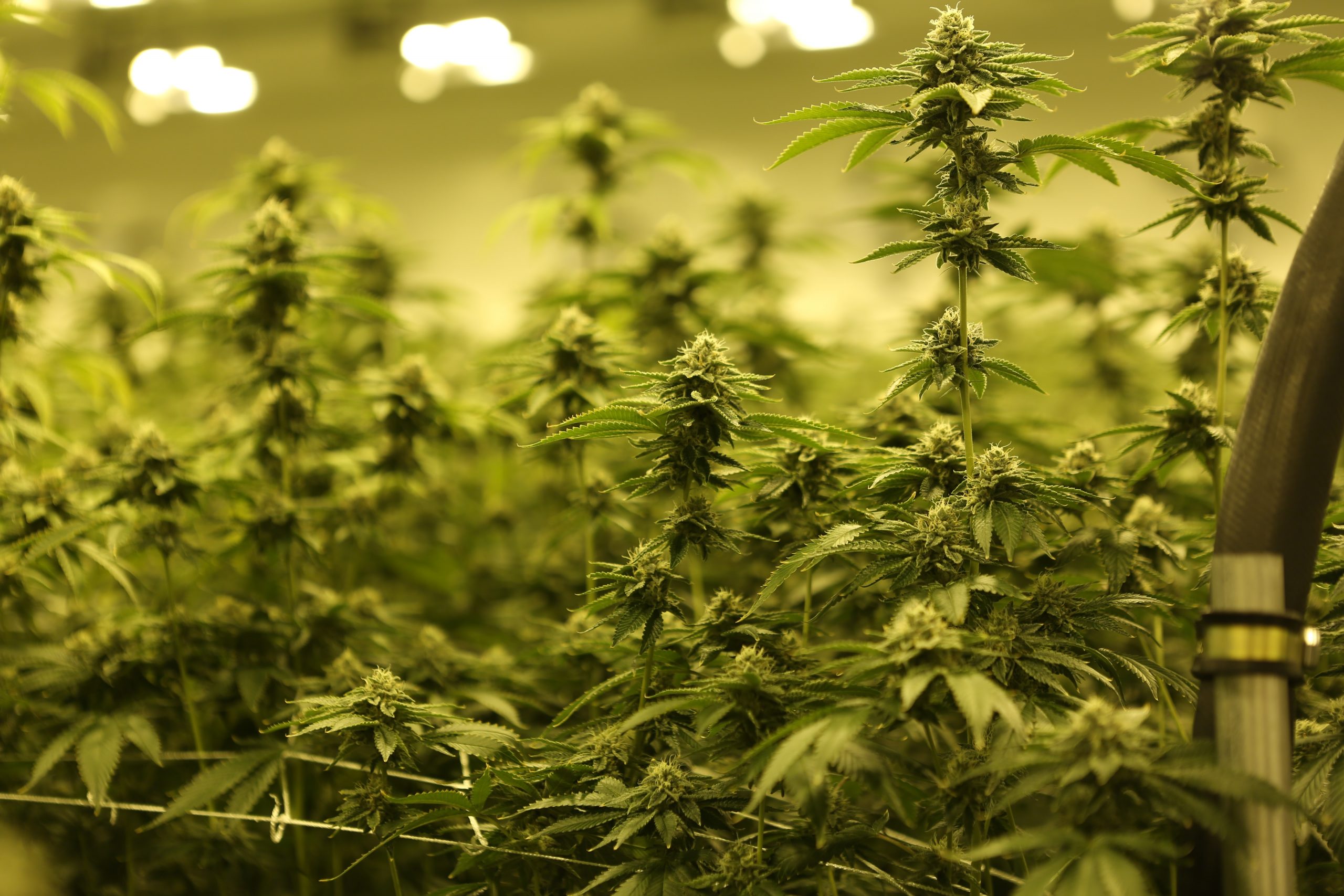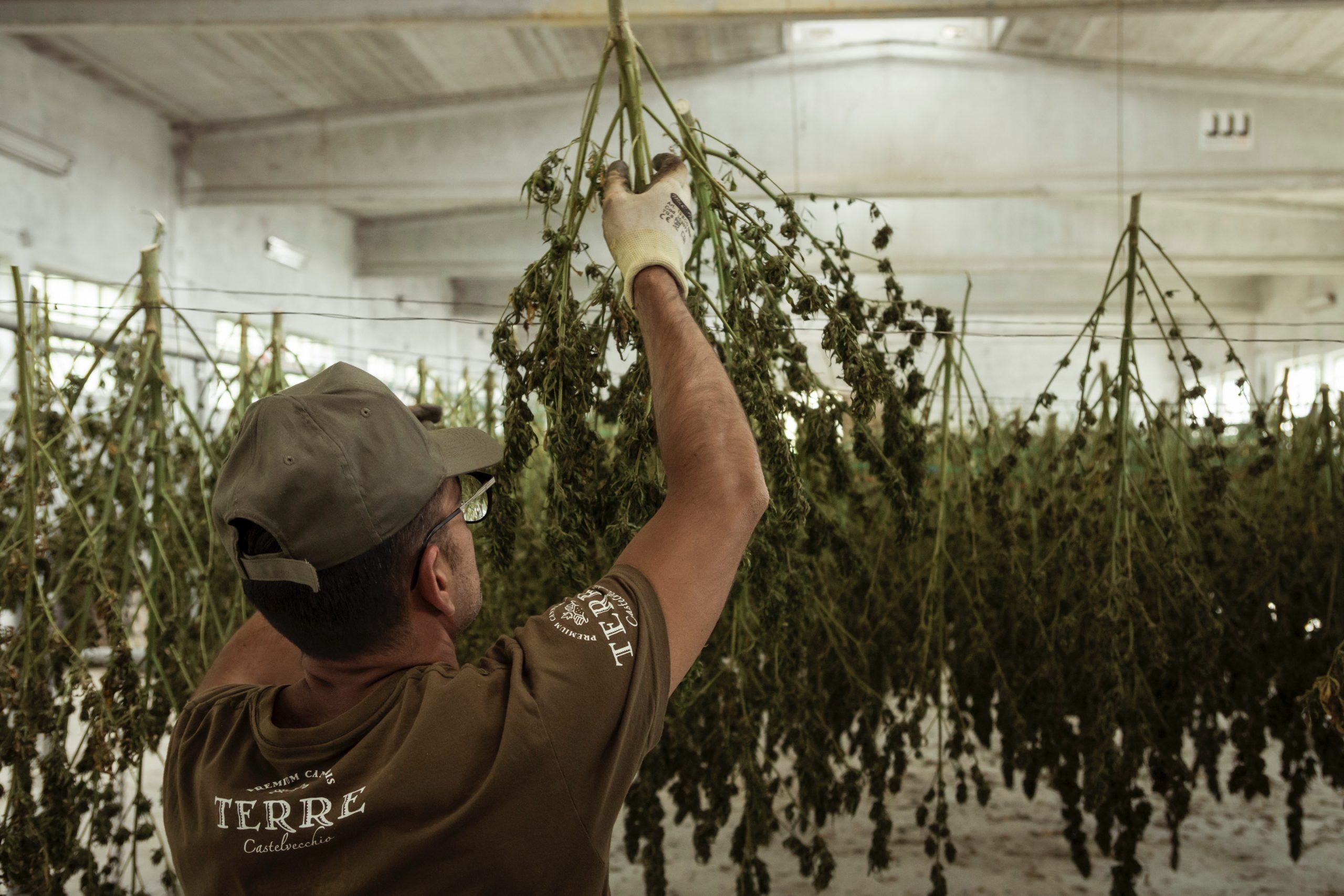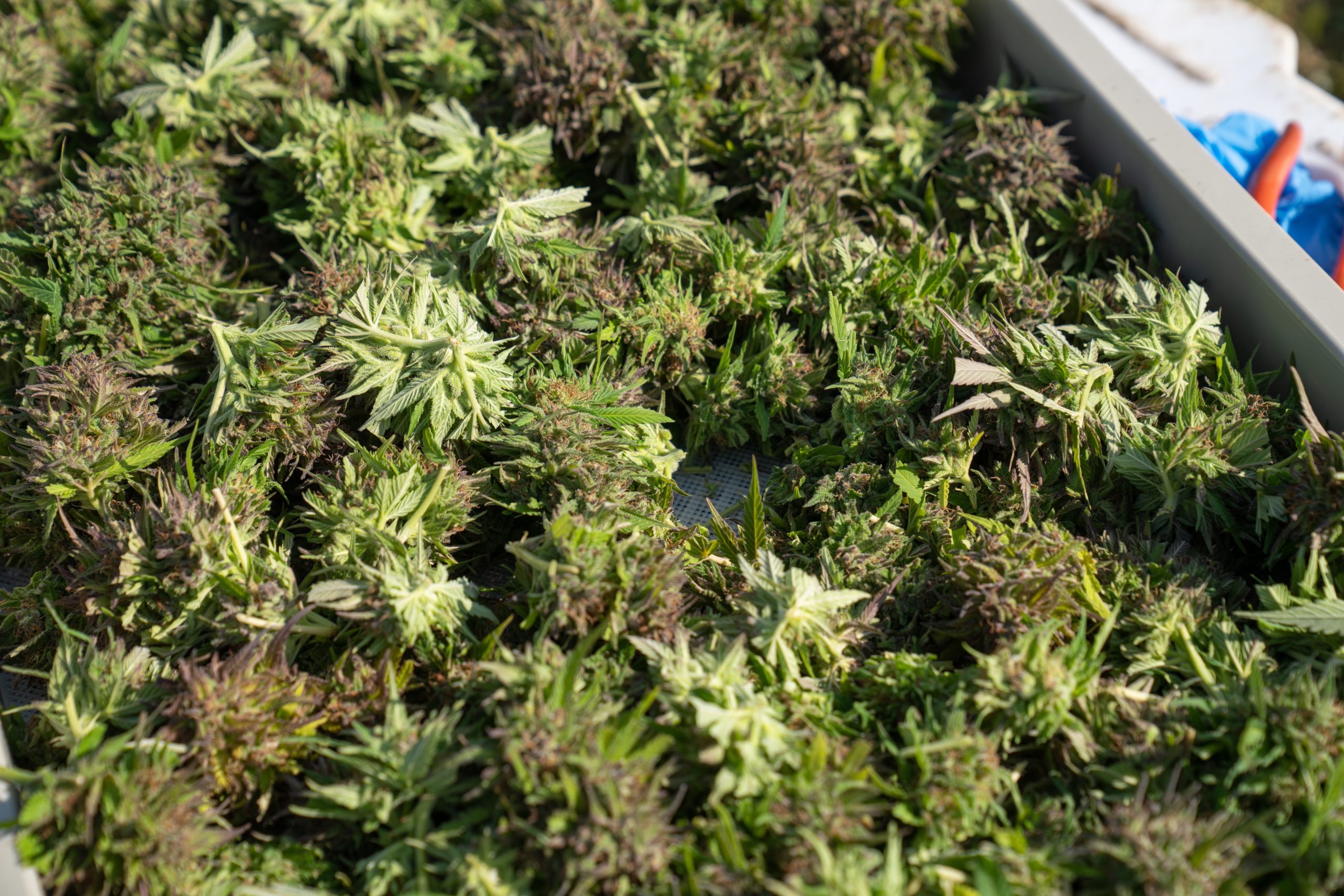
Harvesting cannabis is hard work, we can all agree on that point. But once the plants are hung, one of the worst things to happen to a harvest is the development of bud rot. Not only are there limited things that can be done with a harvest that has suffered from bud rot, but it is costly as well.
Getting bud rot after harvest can be caused by a number of different factors in the dry room and storage. Understanding what bud rot is and how it spreads during the final stages of the harvesting process and storage can help prevent an outbreak in your dry room.

Bud rot is caused by mold spores feeding and expanding on and in a hemp or cannabis plant. These spores are introduced in a variety of ways including pollen, new plants introduced to the crop without being quarantined and treated first, and hosts such as people and animals. These spores find a home within the victim plant, feeding and growing on the bud, oftentimes from within.
According to Volume 77 of Pest Management Science, bud rot is caused by humidity and moisture inside dense canopies. The article suggests “Cannabis strains have noticeable differences in Botrytis bud rot susceptibility: those that produce large tightly packed inflorescences develop more disease than those with smaller and loosely arranged inflorescences. In the latter, improved air movement within the canopy is assumed to be the underlying reason.”
However, bud rot is not just something that impacts growing cannabis crops. Bud rot can follow your harvest into the dry room and even into your finished product.

There are a variety of things that can cause bud rot in a cannabis harvest. The first option is that it existed in the harvest before being chopped and hung for drying. This can occur if preventative measures such as checking buds in problem areas of the flower room. Some growers do not like to do this method, however sacrificing a few buds for the sake of the entire harvest is a crucial investment in your crop’s health and quality.
After the cannabis crop is hung, the mold can take over the entire crop in a matter of days. In a typical dry room, it is kept dark and wind circulated to help the plants dry properly. Many growers try to use the 60/60 method, meaning they keep their dry room at 60℉ and 60% humidity. This provides a balanced room where mold is less likely to thrive.
However, in a poorly designed and maintained dry room, the initial temperature and humidity when hanging will remain above the 60/60 threshold, sometimes for days at a time. This can create the ideal environment, paired with circulating air, to spread mold spores throughout the room.
It is important to note that depending on the grow’s location and how well-sealed the building is, the outside temperature can also have an impact on your dry room/storage humidity and temperature. Growers should be able to make adjustments to ensure they maintain as even an environment as possible. There are various tools available on the market to help achieve this goal.

So you’ve had the misfortune to find bud rot after harvest, what now? The answer depends on the state laws you must adhere to and how far the bud rot has spread. Either way, the unfortunate reality is that once you find bud rot in your harvest, you will have to fight to salvage as much as possible.
If your state’s laws and regulations allow, and depending on the advancement of the bud rot in your harvest, processing the cannabis crop for concentrates may be an option. Certain extraction methods use processes that will destroy mold and other contaminants that can make cannabis suitable for consumption.
However, it is common to test the cannabis first and disclose to any processor what the problem is. Not all extraction methods can be used, and failure to disclose that information can result in the concentrate product failing testing.
On the other hand, if bud rot is too far advanced, destruction may be your only option. This is the worst-case scenario for any cannabis crop and is usually reserved when no other options are available or legally permissible.
After removing plants infected with bud rot from your dry room, cleaning and sanitizing the room is imperative to prevent a future outbreak. Just because the plants are removed does not mean the entirety of the mold is. While a deep clean should be done in between harvests as a standard practice, it is even more important after finding bud rot.
This kind of cleaning should include;
While these may not sound like difficult things to accomplish, they can sometimes be lost among the day-to-day work inside a grow. However, if bud rot is found after a harvest has been hung, these items are important to remember to help avoid passing bud rot onto later harvests.
The best course of action to avoid getting bud rot after harvest is to make sure the harvest end of your grow is up to the task. This includes practices such as;
As previously discussed, this can be difficult in a poorly designed or sealed grow. However, some things can be done to help maintain an ideal drying and storage environment in order to prevent bud rot from taking hold in your cannabis crop.
Bud rot is something no grower wants to deal with in the home stretches of their harvests. Thankfully, there are preventative measures that can be taken to help keep your harvest safe and healthy. Even if bud rot is found, there are some measures that can be taken, depending on the severity of the case and your state’s laws and regulations. However, the best offense is a good defense, and practicing proper grow/drying procedures can help keep bud rot out of your drying room and off your cannabis crop.
Work Cited
Punja, Zamir K. “Emerging diseases of Cannabis Sativa and sustainable management.” Pest Management Science, vol. 77, no. 9, 2021, pp. 3857-3870. Wiley Online Library, https://onlinelibrary.wiley.com/doi/full/10.1002/ps.6307. Accessed 2023.

to receive updates and news on our products, events and promos!